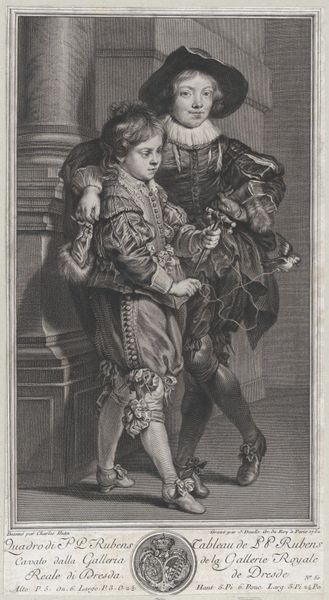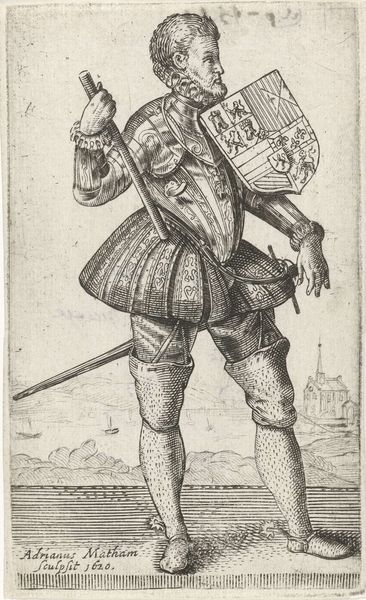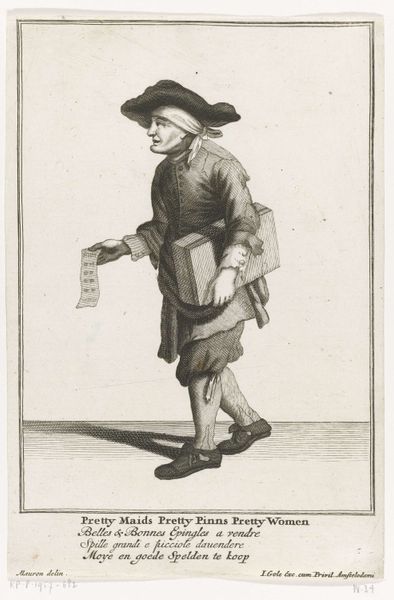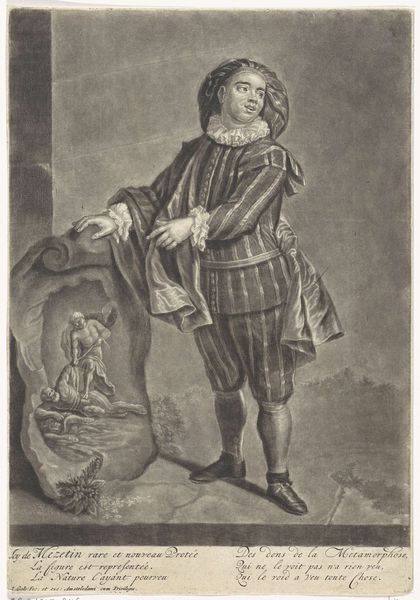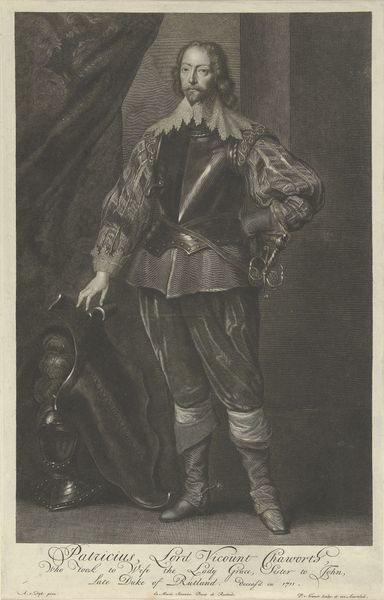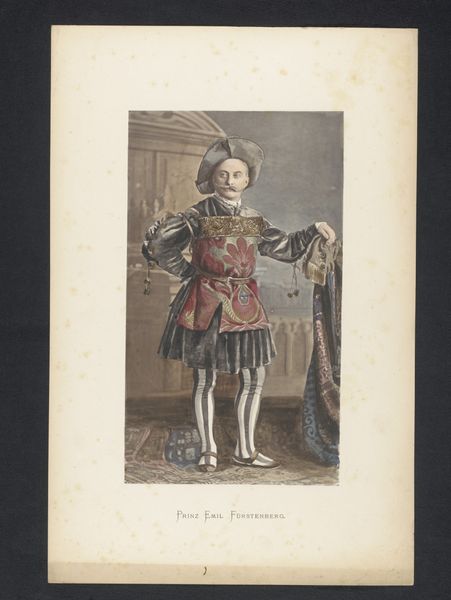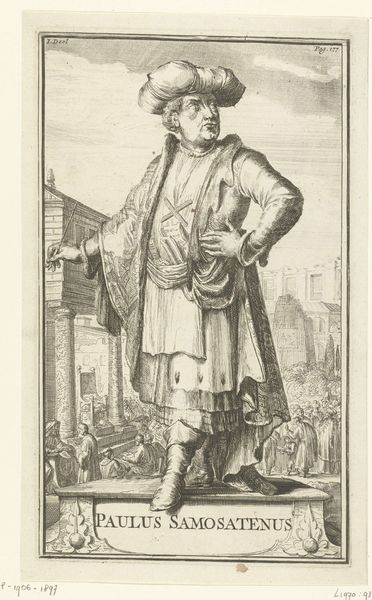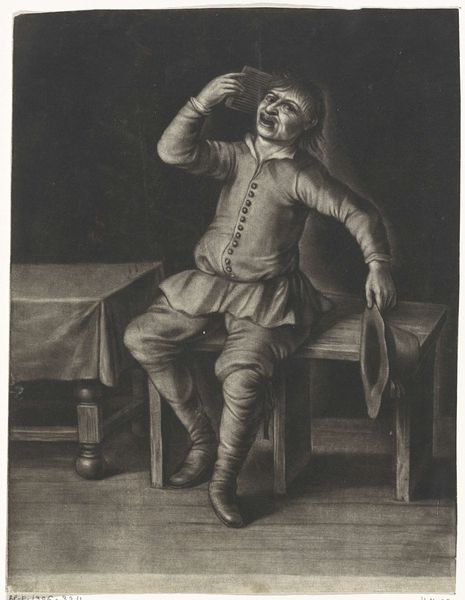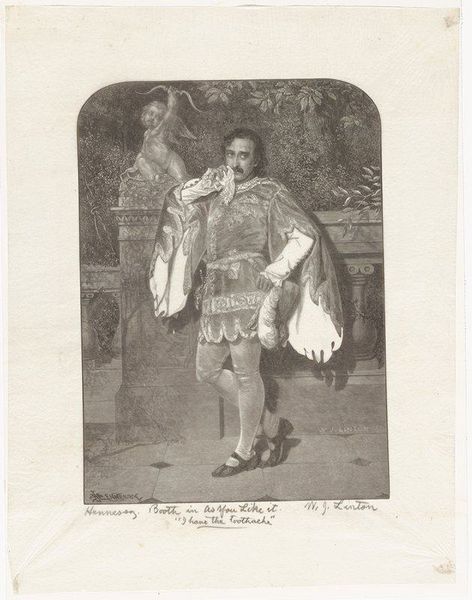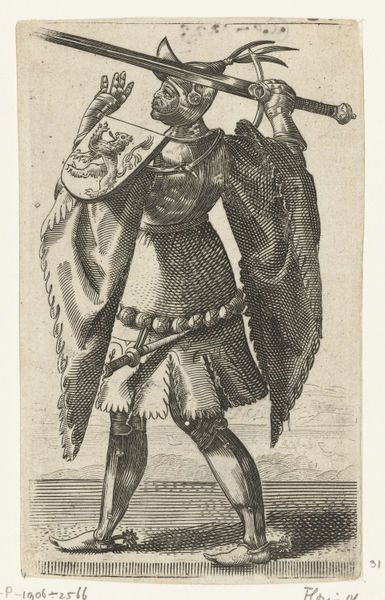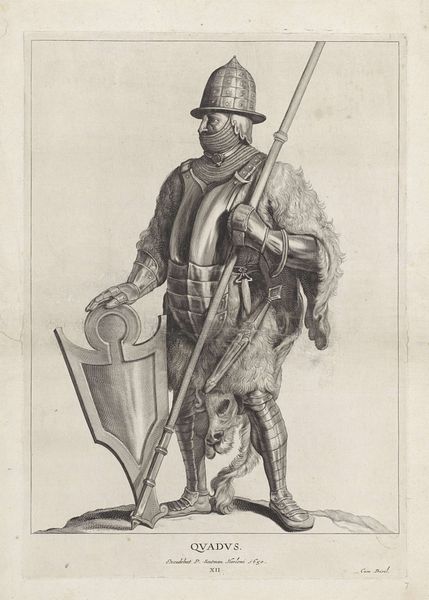
J. B. Buckstone as Spado in 'The Castle of Andalusia' by John O'Keefe, Haymarket Theatre 1833
0:00
0:00
oil-paint
#
portrait
#
oil-paint
#
figuration
#
romanticism
#
genre-painting
Copyright: Public domain
Editor: This is Robert William Buss's 1833 oil painting of J. B. Buckstone as Spado from 'The Castle of Andalusia'. There's a heightened theatricality about the scene. What do you see in this piece that informs that sensation? Curator: Beyond the obvious theatrical origins, note how Spado is presented. The setting feels cavernous, gothic. He clutches his hat, defensively, with eyes wide. He embodies both comedy and vulnerability simultaneously. What anxieties might Buckstone have tapped into to generate that effect, do you think? Editor: Perhaps he wanted to reflect anxieties around performance, maybe about one's public persona versus the private self? Or more literally, something went wrong with the play, on stage? Curator: Both resonate! This painting acts as a container for complex, interwoven themes: public image, societal expectations, even perhaps the anxieties of a rapidly changing world. Spado isn't just a character, but a reflection of the age, a conduit for deeper cultural anxieties. Buss reminds us that art isn't just imitation, but interpretation, too. Editor: I appreciate the way the image seems to contain multitudes, beyond simply being a stage portrait. It’s a clever reminder of the enduring power of symbols and the narratives we build around them. Curator: Indeed. The more we observe, the more the symbolism unfolds. Art creates its own continuity between history and the present, and that connection alone offers plenty to ponder.
Comments
No comments
Be the first to comment and join the conversation on the ultimate creative platform.

